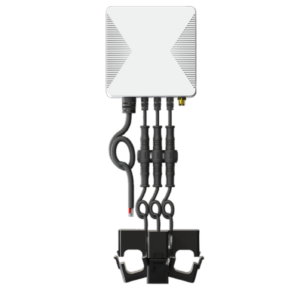Notions de base sur l'énergie et l'électricité
Understand the fundamentals of electricity and smart energy management. Learn how home power systems work, essential electricity concepts, and the principles behind energy-efficient technologies.
Understand the difference between 120V and 240V thermostat wiring, when a relay power supply is required, and how to connect safely at home.
Thinking about installing a new appliance?Maybe you’re moving into a new home and wondering if your laundry room has the right outlet for your dryer. Or perhaps you just bought a portable air conditioner or even an EV charger. One of the first questions that pops up is simple but important: how to tell if […]
Apprenez les bases de l'installation de thermostats intelligents pour plinthes chauffantes 120 V et 240 V. Comprenez les options de câblage unipolaire et bipolaire, à 2, 3 et 4 fils.
Visualize and Plan Your Home Electrical System Planning your home’s wiring can feel overwhelming, especially when upgrading appliances or preparing for EV installation. Home Electrical Load Calculator by Grus.io is a free electrical load calculator built for homeowners, DIYers, and electricians. With a visual interface, you can map circuits and use the exact home circuit […]
If you're living in North America, chances are your home uses a split-phase 120/240V electrical system. This setup powers everything from your lights and outlets (120V) to high-draw appliances like dryers, HVAC systems, and water heaters (240V). But here’s the problem: most homeowners have zero visibility into how much electricity each part of the home […]
Learn how multi-circuit energy meters improve real-time power tracking in commercial setups. Explore key features, benefits, and applications.
Découvrez les différences entre les formes d'onde de tension alternative 120 V, 120 V/240 V et 120 V/208 V, leurs applications et les calculs de tension. Découvrez le fonctionnement des alimentations triphasées et divisées et optimisez votre consommation d'énergie grâce aux compteurs intelligents.
Découvrez les composants, la structure du câblage et les problèmes de conformité courants d'un tableau électrique triphasé 120/208 V. Apprenez à installer en toute sécurité des pinces TC, à détecter les déséquilibres de charge et à utiliser les compteurs intelligents Grus pour la surveillance de la puissance en temps réel et l'optimisation énergétique.
Découvrez les systèmes de tension nord-américains (120/240 V, 120/208 V, 277/480 V), leurs applications, leurs configurations de câblage et la manière dont les compteurs intelligents comme Grus WattPanel-2X optimisent l'efficacité énergétique des maisons et des entreprises.
Quelle est la phase du courant électrique domestique américain ? Découvrez les principales différences entre les modes monophasé, biphasé et triphasé, leur utilisation dans les foyers et les entreprises, et comment surveiller votre consommation d'électricité grâce aux compteurs intelligents Grus pour une meilleure efficacité énergétique et des économies.
Produits phares
©2025 Tous droits réservés. Grus IoT Co.,Ltd.





